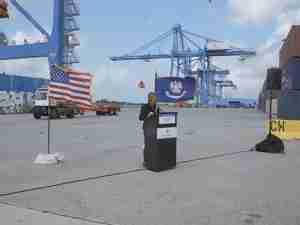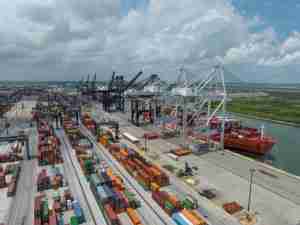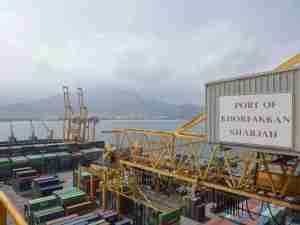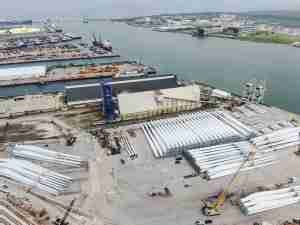“While the national and world economy still challenges our efforts in many ways, our most recent annual cargo statistics again demonstrate that the Port of Philadelphia is on the right track,” said PRPA Executive Director James T. McDermott, Jr. “Our 2012 cargo figures not only represent the third year in a row where we’ve seen double-digit growth, but it also means that since 2009 we’ve experienced a more than 30% increase in tonnage. And that’s not only a solid indicator that the economy is improving, but especially great news for the thousands of jobs generated by port activity for our region, and the numerous other economic benefits the Port of Philadelphia provides.”
Highlights among the Port’s 2012 cargo statistics include the following: with 197,854 tons handled last year, steel was up 21%. With 47,457 tons handled, project cargo was also up 21%. Sugar, a brand new cargo for the Port of Philadelphia in 2012, weighed in at 24,331 tons last year.
Other cargoes may not have increased as much on a percentage basis, but the sheer amount of cargo handled made their performance just as dramatic, if not more so. This was especially true for automobiles.
Automobiles, specifically new Hyundai and Kia cars from South Korea, continue to be a big success story for the Port of Philadelphia since the cargo began arriving here in 2010. With 192,918 metric tons (representing 143,258 individual units) of cars coming into the Port in 2012 compared to the 174,978 tons (127,406 units) that arrived here in 2011, cars were up a healthy 10.25%. In a cooperative effort regularly demonstrating speed, efficiency, and attention to detail, auto cargoes are unloaded by the ILA and processed for eventual shipment inland by the Teamsters.
Liquid bulk cargoes also showed healthy gains, both on a percentage basis and amount of cargo handled. With 1,227,095 metric tons of liquid bulk arriving at the Port of Philadelphia’s Kinder Morgan tank facility in 2012 compared to the 740,890 metric tons that moved through the facility in 2011, liquid bulk- already a healthy cargo- was up a dramatic 65.62%.
Though containerized cargoes were flat (2,003,909 metric tons handled), port customer Hamburg Sud showed a 46% gain in TEU’s handled last year, moving 108,379 units.
“The fact that the Port of Philadelphia’s 2012 cargo statistics again show healthy gains in overall tonnage is very exciting,” said Mr. McDermott. “It’s exciting because we’re currently working to deepen our main shipping channel to 45 feet and build Southport, the first major marine terminal at the Port of Philadelphia in decades. With continuous cargo gains being seen before these projects are even completed, we truly look forward to the day in the near future when deeper water and more facilities are added to our cargo-building arsenal.”










